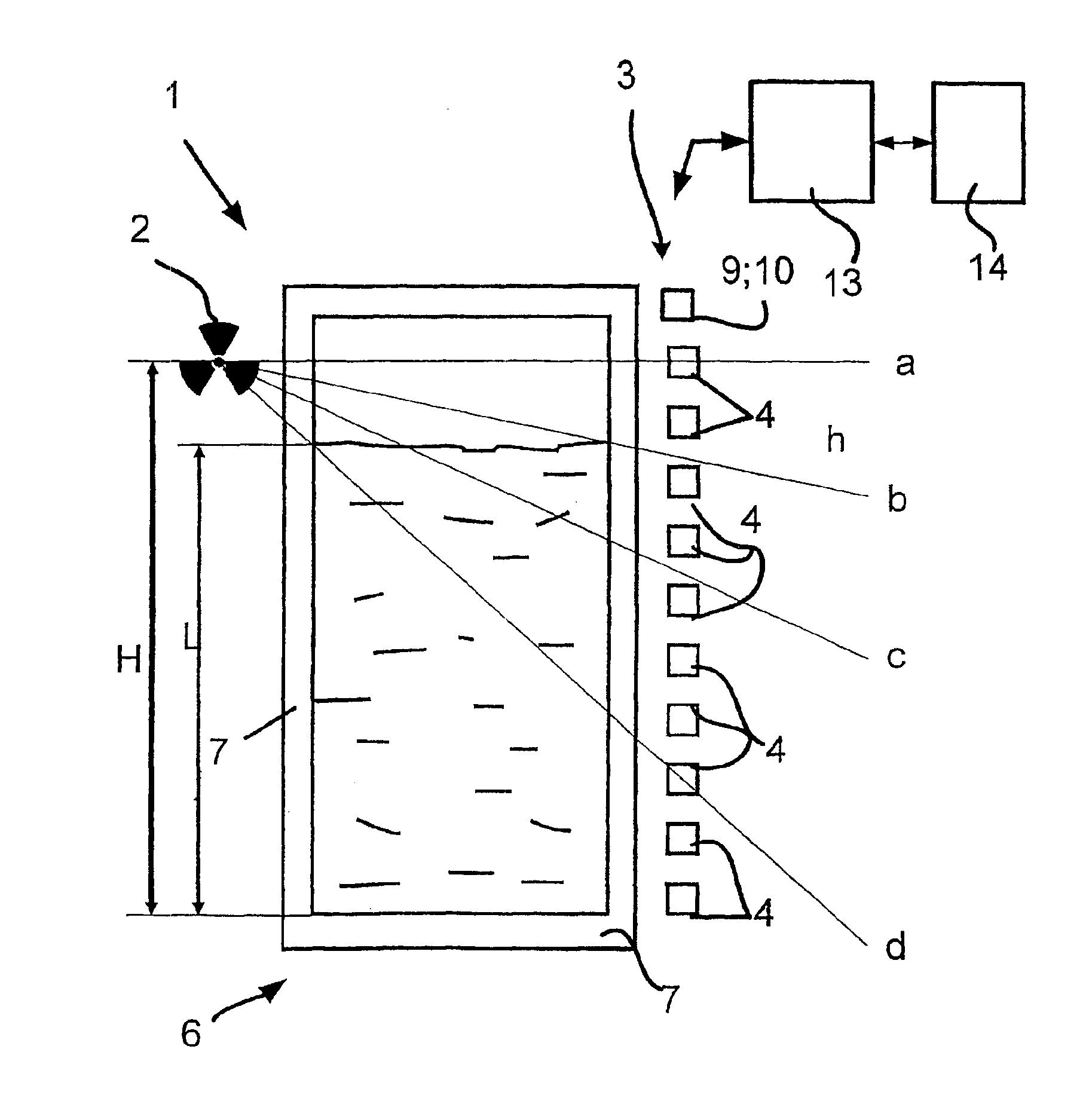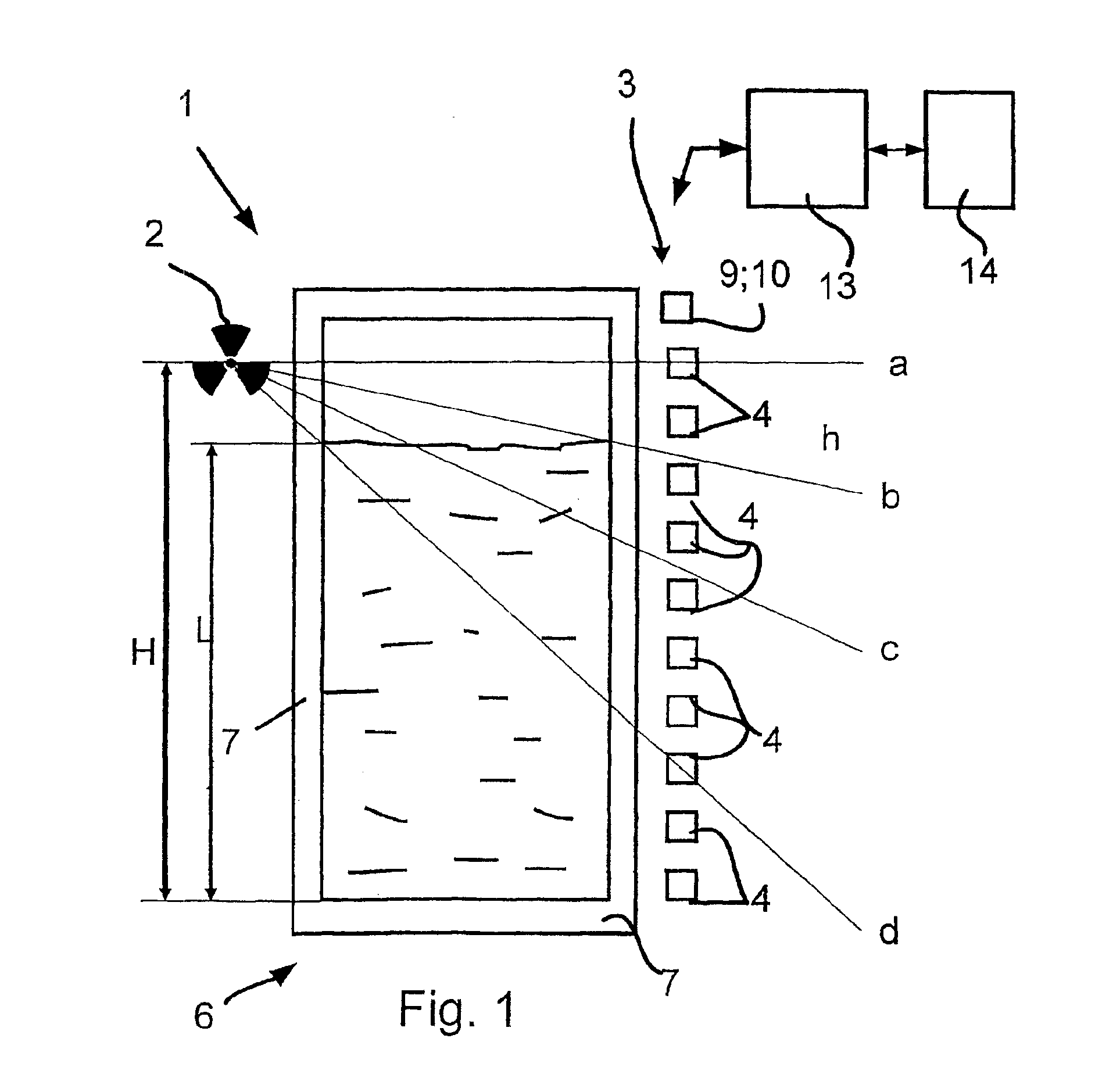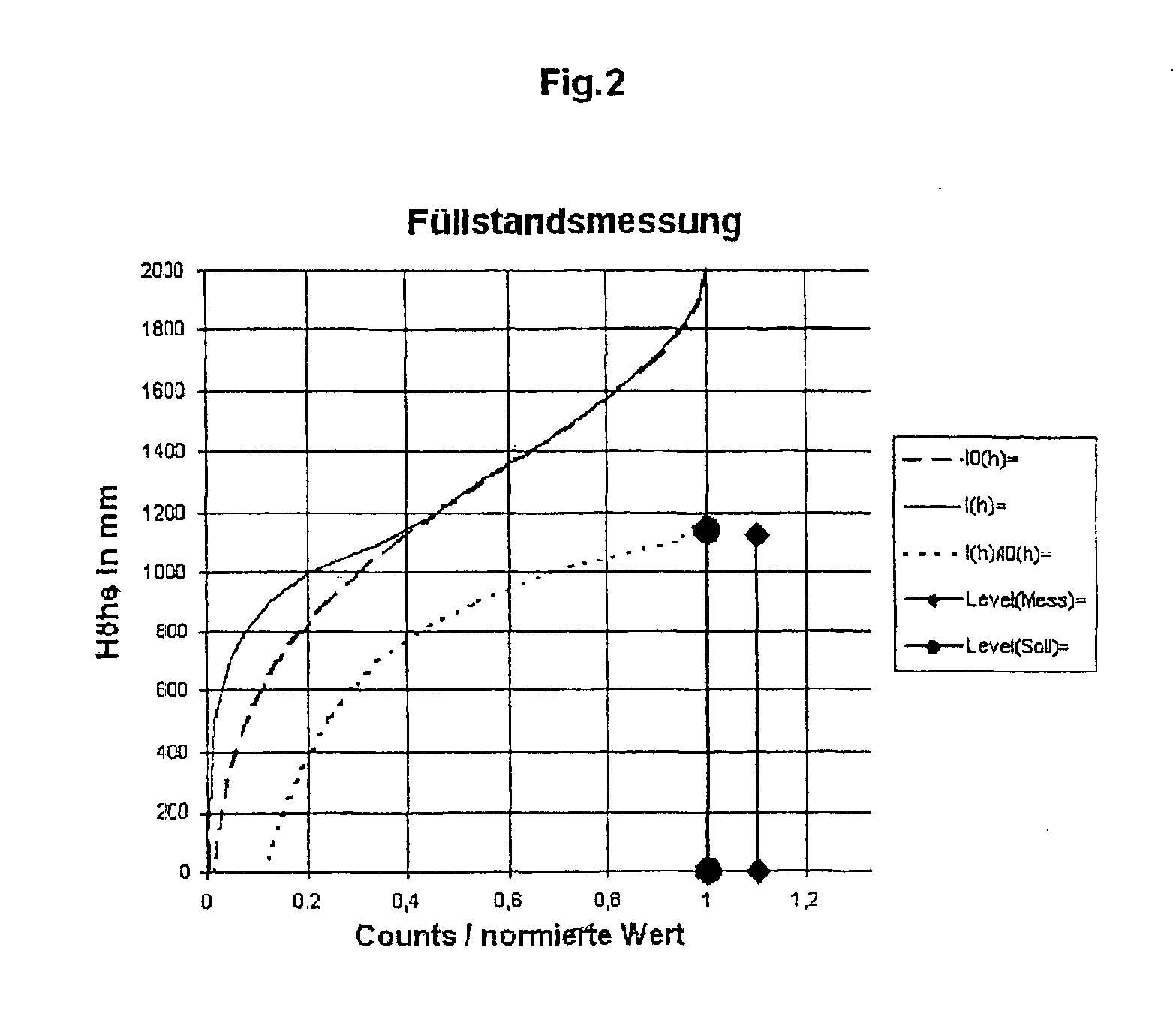Device for determining and/or monitoring the density and/or the level of a filling material in a container
a technology for determining and/or monitoring the density and/or the level of a filling material in a container, which is applied in the direction of geological measurements, liquid/fluent solid measurements, nuclear radiation detection, etc., can solve the problem of increasing the travel length of the container wall and thus the radiation incidence at the container wall, and achieves reliable measurement
- Summary
- Abstract
- Description
- Claims
- Application Information
AI Technical Summary
Benefits of technology
Problems solved by technology
Method used
Image
Examples
first embodiment
FIG. 1 shows a schematic illustration of the device 1 of the invention. The filling material 8 is stored in the container 6. The fill level of the filling material 8 in the container 6 at the time is marked L.
A point-like transmitting unit 2 that transmits radioactive radiation is disposed in the upper region of the container 6. The radioactive radiation penetrates the container wall 7 and the interior of the container 6 and is received by the detector units 4 that are located on the opposite side of the container 6. The detector units 4 are either individual detectors or detector arrays 5, which are put together from a plurality of individual detectors. One possible embodiment of a detector array 5 is also shown in FIG. 6.
The lower-case letters a, b, c, d stand for instance for four different distances that the radiation travels through the container before it is received by the corresponding detector units 4. It is self-evident that the proportion of the radiation that reaches a d...
second embodiment
In FIG. 4, the device 1 of the invention is shown schematically. This embodiment differs from that shown in FIG. 1 in that a plurality of detector units 4 are each disposed on a respective retaining element 12, and the individual retaining elements 12 are positioned such that the detector units 4 can cover the entire measurement range. The cascading of the individual detectors is moreover done in the case illustrated via a bus line 16. The bus line 16 can connect both individually housed detector units 4 and multiple detector units 4 that form a detector array 5 or that are disposed on a retaining element 12 with one another. Because of this embodiment, for a fundamentally unlimited measurement range, only one regulating / evaluating unit 13 is required. The regulating / evaluating unit 13 interrogates the detector units 4 in succession and subsequently evaluates the measurement data forwarded.
Retroactive expansions of the measurement range can be done at any time without problems in th...
third embodiment
FIG. 5 schematically shows the device 1 of the invention. The difference from the embodiments shown in FIGS. 1 and 4 is primarily in the geometry of the container 6.
Besides measuring or monitoring the level of a filling material 8 in a container 6, the device of the invention is also—as already mentioned several times—excellently well suited to measuring or monitoring the density of a filling material 8. For the sake of clarity, the following example is referred to: In fluidized bed reactors, the density of the filling material 8, in the normal situation, is not constant above the level L. Because of the fluidization, gases or clouds of dust predominantly occur in the upper region of the container 6 or reactor, while in the lower region the filling material 8 is tightly packed. With conventional measuring instruments, this effect is taken only inadequately into account by assuming that the course of density corresponds with a predetermined characteristic linearization curve. The act...
PUM
| Property | Measurement | Unit |
|---|---|---|
| Time | aaaaa | aaaaa |
| Temperature | aaaaa | aaaaa |
| Density | aaaaa | aaaaa |
Abstract
Description
Claims
Application Information
 Login to View More
Login to View More - R&D
- Intellectual Property
- Life Sciences
- Materials
- Tech Scout
- Unparalleled Data Quality
- Higher Quality Content
- 60% Fewer Hallucinations
Browse by: Latest US Patents, China's latest patents, Technical Efficacy Thesaurus, Application Domain, Technology Topic, Popular Technical Reports.
© 2025 PatSnap. All rights reserved.Legal|Privacy policy|Modern Slavery Act Transparency Statement|Sitemap|About US| Contact US: help@patsnap.com



